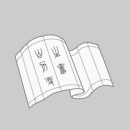
英文技术写作进阶
全新正版 极速发货
¥ 37.42 6.5折 ¥ 58 全新
库存4件
广东广州
认证卖家担保交易快速发货售后保障
作者陈美华、俞韫烨、金晶、王学华、[美]顾宝桐(Baotong Gu)、[美]乔治·普尔曼(George Pullman) 著
出版社清华大学出版社
ISBN9787302658436
出版时间2024-04
装帧平装
开本其他
定价58元
货号1203299567
上书时间2025-01-07
- 最新上架
商品详情
- 品相描述:全新
- 商品描述
-
目录
Contents
Chapter 1 Technical Writing:A Brief Introduction-⋯⋯⋯⋯⋯⋯1
1.1 Rhetorical Aspects of Technical Writing⋯2
1.2 The Author and Audience of Technical Writing⋯9
1.2.1 The Author of Technical Writing⋯⋯⋯⋯⋯⋯⋯⋯⋯⋯9
1.2.2 The Audience of Technical Writing--⋯⋯⋯⋯⋯⋯⋯14
1.3 The lmportance of Technical Writing in theWorkplace15
Chapter 2 Constructing Effective Documents:Design Principles and Visualization⋯⋯⋯⋯⋯⋯⋯⋯⋯⋯19
2.1 The C.R.A.P Principles⋯⋯⋯⋯⋯⋯⋯⋯⋯⋯⋯⋯⋯⋯⋯⋯⋯⋯⋯⋯20
2.1.1 Contrast ⋯⋯⋯⋯⋯⋯⋯⋯⋯⋯⋯⋯⋯⋯⋯⋯⋯⋯⋯⋯⋯⋯⋯⋯⋯⋯20
2.1.2 Repetition⋯⋯⋯⋯⋯⋯⋯⋯⋯⋯⋯⋯⋯⋯⋯⋯⋯⋯⋯⋯⋯⋯⋯⋯22
2.1.3 Alignment⋯23
2.1.4 Proximity ⋯25
2.2 Typefaces and Line Length ⋯⋯⋯⋯⋯⋯⋯⋯⋯⋯⋯⋯⋯⋯⋯⋯⋯⋯⋯27
2.2.1 Typefaces⋯⋯⋯⋯⋯⋯⋯⋯⋯⋯⋯⋯⋯⋯⋯⋯⋯⋯⋯⋯⋯⋯⋯⋯⋯27
2.2.2 Line Length⋯⋯⋯⋯⋯⋯⋯⋯⋯⋯⋯⋯⋯⋯⋯⋯⋯⋯⋯⋯⋯⋯⋯⋯29
2.3 Visualization in Technical Writing⋯⋯⋯⋯⋯⋯⋯⋯⋯⋯⋯⋯⋯⋯30
2.3.1 Tables⋯⋯⋯⋯⋯⋯⋯⋯⋯⋯⋯⋯⋯⋯⋯⋯⋯⋯⋯⋯⋯⋯⋯⋯⋯⋯⋯30
2.3.2 Graphs ⋯⋯33
2.3.3 Charts⋯35
2.3.4 Infographics⋯⋯⋯⋯⋯⋯⋯⋯⋯⋯⋯⋯⋯⋯⋯⋯⋯⋯⋯⋯⋯⋯⋯38
2.3.5 Mind Maps⋯47
Chapter3 Writing Business Correspondence+⋯⋯⋯⋯⋯⋯⋯⋯⋯⋯53
3.1 Principles of Effective Correspondence⋯54
3.1.1 Creating Goodwill⋯⋯⋯54
3.1.2 Communicating Honestly⋯⋯⋯⋯⋯⋯⋯⋯⋯⋯⋯⋯⋯⋯⋯⋯⋯⋯5
3.1.3 Using a Suitable Tone and the "You"Attitude5
3.1.4 Providing Need-to-Know Information Accurately
and Logically⋯55
3.1.5 Using Concise,Standard Language and
Avoiding Cliches⋯⋯⋯⋯⋯⋯⋯⋯⋯⋯⋯⋯⋯⋯⋯⋯⋯⋯⋯⋯⋯56
3.2 Basic Pattern of Business Correspondence⋯56
3.2.1 Letters: Features, the Rhetorical Situation,and Elements ⋯⋯57
3.2.2 E-mails: Features, the Rhetorical Situation, Elements,and Netiquettes⋯⋯⋯⋯⋯⋯⋯⋯⋯⋯⋯⋯⋯⋯⋯⋯⋯⋯⋯⋯60
3.2.3 Memos: Features, the Rhetorical Situation, Elements,and Format⋯⋯⋯⋯⋯⋯⋯⋯⋯⋯⋯⋯⋯⋯⋯⋯⋯⋯⋯⋯⋯⋯⋯⋯63
3.3 Language Styles of Daily Correspondence ⋯⋯⋯69
3.3.1 Language for Informative and Good Messages --69
3.3.2 Language for Bad News Messages⋯⋯69
3.3.3 Language for Persuasive Messages⋯70
3.4 Chapter Examples⋯⋯⋯⋯⋯⋯⋯⋯⋯⋯⋯⋯⋯⋯⋯⋯⋯⋯⋯⋯⋯⋯72
Chapter 4 Writing for Employment ⋯77
4.1 Resumé--78
4.2 Letter ofApplication---80
4.3 Follow-up Message82
4.4 Portfolio⋯⋯82
4.5 Chapter Example ⋯84
Chapter 5 Writing Proposals 89
5.1 Definition⋯⋯90
5.2 Rhetorical Situations-91
5.2.1 Author---91
5.2.2 Audience⋯91
5.2.3 Purpose⋯91
5.2.4 Format⋯⋯⋯⋯91
5.2.5 Structure⋯⋯⋯92
5.2.6 Strategy⋯⋯⋯92
5.3 Types of Proposals -93
5.3.1 Internal vs External Proposals-⋯93
5.3.2 Solicited vs Unsolicited Proposals⋯⋯93
5.3.3 Proposals for Specific Purposes⋯⋯93
5.4 How to Write a Persuasive Proposal-106
5.5 Chapter Example ⋯107
Chapter 6 Writing Reports⋯115
6.1 Definition--⋯⋯⋯⋯⋯⋯⋯⋯⋯⋯⋯⋯⋯⋯⋯⋯⋯⋯⋯⋯⋯⋯⋯⋯116
6.2 Rhetorical Situations⋯116
6.2.1 Considering the Audience⋯⋯⋯⋯⋯⋯⋯⋯⋯⋯⋯⋯116
6.2.2 Understanding the Purpose⋯⋯116
6.3 Types of Reports⋯⋯⋯⋯⋯⋯⋯⋯⋯⋯⋯⋯⋯⋯⋯⋯⋯⋯⋯⋯⋯117
6.4 Effective Strategies for Writing Persuasive Report⋯⋯135
6.5 Chapter Example ⋯⋯137
Chapter 7 Writing Instructions ⋯⋯⋯⋯⋯⋯⋯⋯⋯⋯⋯⋯⋯⋯⋯⋯⋯⋯⋯⋯-147
7.1 Rhetorical Situations⋯148
7.1.1 Understanding the Audience and the Purpose ⋯⋯⋯148
7.1.2 Gaining Insights into Products and Procedures ⋯⋯149
7.2 Formats and Key Components⋯149
7.2.1 Formats of Instructions⋯⋯⋯⋯⋯⋯⋯⋯⋯⋯⋯⋯⋯⋯150
7.2.2 Key Components of Instructions⋯⋯⋯⋯⋯⋯⋯⋯⋯-154
7.3 Effective Strategies for Writing Effective Instructions ⋯158
7.3.1 Defining Key Concepts⋯⋯⋯⋯⋯⋯⋯⋯⋯⋯⋯⋯⋯-158
7.3.2 Writing Step-by-Step Instructions⋯⋯⋯⋯⋯⋯⋯⋯⋯⋯161
7.3.3 Designing Clear,Attractive Pages ⋯⋯⋯⋯⋯⋯⋯⋯⋯163
7.3.4 Writing Safety Information⋯⋯⋯⋯⋯⋯⋯⋯⋯⋯⋯⋯⋯⋯166
7.4 Chapter Examples ⋯168
Chapter 8 Researching to Write⋯⋯⋯⋯⋯⋯⋯⋯⋯⋯⋯⋯⋯⋯⋯⋯⋯175
8.1 User Research-⋯⋯⋯⋯⋯⋯⋯⋯⋯⋯⋯⋯⋯⋯⋯⋯⋯⋯⋯⋯⋯⋯176
8.1.1 How to Conduct User Research⋯⋯⋯⋯⋯⋯⋯⋯⋯⋯⋯176
8.1.2 Suggested Steps in Conducting User Research ⋯⋯⋯179
8.2 Task Analysis⋯⋯185
8.3 Interviews⋯⋯⋯⋯⋯⋯⋯⋯⋯⋯⋯⋯⋯⋯⋯⋯⋯⋯⋯⋯⋯⋯⋯186
8.4 Research Reports ⋯⋯⋯⋯⋯⋯⋯⋯⋯⋯⋯⋯⋯⋯⋯⋯⋯⋯⋯⋯⋯⋯⋯187
8.5 User Personas⋯⋯⋯188
8.5.1 Understanding User Personas⋯⋯⋯⋯⋯⋯⋯⋯⋯⋯⋯188
8.5.2 Constructing and Utilizing User Personas⋯⋯⋯⋯⋯⋯190
8.6 Chapter Example ⋯⋯⋯⋯⋯⋯⋯⋯⋯⋯⋯⋯⋯⋯⋯⋯⋯⋯⋯⋯⋯⋯191
References ⋯199
内容摘要
《英文技术写作进阶》新编教材紧扣“读者为中心”理念,强调学生对写作规范的感悟和扎实的语言能力,注重培养学生分析写作情境和需求、选取写作策略、综合运用写作技术的能力。本教材共设8单元,从技术写作的传播学、修辞学基础开始讲授,将技术写作置于动态变化的工作情境中,培养学生“以读者为中心”的理念,教授学生信息设计的基本原则,以此来帮助学生掌握工作情境中最常用的文体,并初步了在工作环境下研究用户的实用方法。
本教材的目标读者有以下几类:
1.非语言类专业的本科生,特别是理工科学生提升英语水平和沟通交际能力;
2.各专业硕士研究生,提升英语水平和沟通交际能力;
3.在职的、有志于提升沟通能力、技术写作水平的人士。
此外,本书还专门编写了供教师教学使用的补充材料和参考答案。
— 没有更多了 —













以下为对购买帮助不大的评价